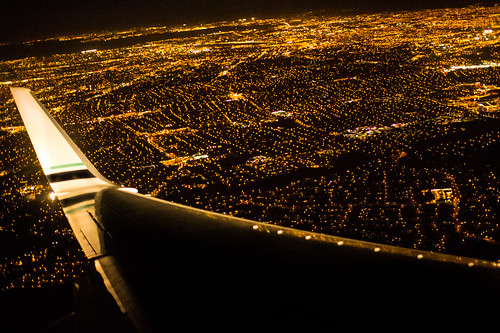Last Tuesday, CBS SF Bay Area published an article titled, "Silicon Valley Exodus Is Real, Even Techies Can’t Afford The Bay Area Anymore", and naturally it elicited some feelings of panic from its readers.
Well, local news stations like CBS make a living off of fear-mongering, so apocalyptic article titles like this should be expected. But is there validity to the claim? Like most of these articles, maybe. You just have to sift through the click-bait theatrics to find it.
The article was written in response to a study released by the real estate brokerage Redfin. The study reported that in an analysis of search data from the Redfin's website, they found that 1 in 4 people in the Bay Area searched for a home outside of the Bay Area (compared to just 1 of 7 in 2011), and that a large chunk of these searches were done for homes in other up and coming tech cities like Seattle, Boston, Portland, and Austin. The study ultimately deduced that the high cost of living in the Bay Area is driving some tech workers to take jobs in cities where housing is cheaper.
I'll buy that.
Software Developers in Silicon Valley do have a much higher median salary ($112,000) than software developers in Boston ($83,300), Portland ($79,700) or any other city for that matter. But the median cost of a home here in the Silicon Valley is a whopping $1,050,000, while in Boston it's just $480,000, and in Portland $375,000. So it seems reasonable to expect that for some techies the pay gap isn't enough to keep them from taking a job in a city that costs less than half as much to live in. Some of them may not even have to take a pay cut if they are staying with the same company and just transferring to a facility in a different city.
But are we in the midst of a Silicon Valley exodus? Or is there a possibility of one occurring in the near future?
Not likely.
Just because people are taking jobs in other cities doesn't mean we are losing our workforce. The Silicon Valley is growing as fast as it ever has. Facebook just opened a massive new campus near their Menlo Park HQ capable of holding 2,800 employees, and they have plans to develop two other nearby sites they recently purchased (they are by far Menlo Park's largest landowner and employer). According to their careers page they are currently hiring almost 500 new employees in Menlo Park, with that number sure to jump as they begin settling into their new campus (and jump even more once the next new campus opens). And with all of the real estate that Google has purchased over the last several years, they are reported to have the capacity to expand their already massive Bay Area workforce by 30,000 employees. There were even unofficial reports from industry insiders last year claiming Google has plans to hire around 5,000 Bay Area employees per year for at least the next 5 years (Google doesn't disclose hiring data so the numbers can't be verified). Over in Cupertino, Apple is in the process of building one of the largest, most expensive tech facilities yet, which will hold 13,000 employees on a 176-acre site.
And how about our well of innovation, startups? Those don't appear to be going anywhere either. Angel List, a fundraising platform for startups, lists 18,040 of them in the greater Silicon Valley area. And Stanford University figures to continue to be a huge source of brain power for Silicon Valley companies for years to come.
Don't get me wrong - there is no doubt that the cost of living is pushing people out of the Bay Area. The Silicon Valley's flourishing tech sector brought about a population boom that our housing supply wasn't ready to handle. As a consequence, housing prices skyrocketed. But I think what we are seeing is an overflow of people, not an exodus of people. The overcrowded housing market is trying to normalize itself by pushing out some of the excess demand. And while the area is certainly going through an affordable housing crisis, it isn't the software developers making a median salary of $112,000/year that are being forced out of the Silicon Valley - these people are choosing to move.
To put it into perspective: did Wall Street pack up and head elsewhere because Manhattan got too expensive? No, but as the financial industry grew, places like Chicago, Boston and San Francisco emerged as new financial hubs and some Wall Street workers moved there. Still, Manhattan remains the financial capital of the world.


